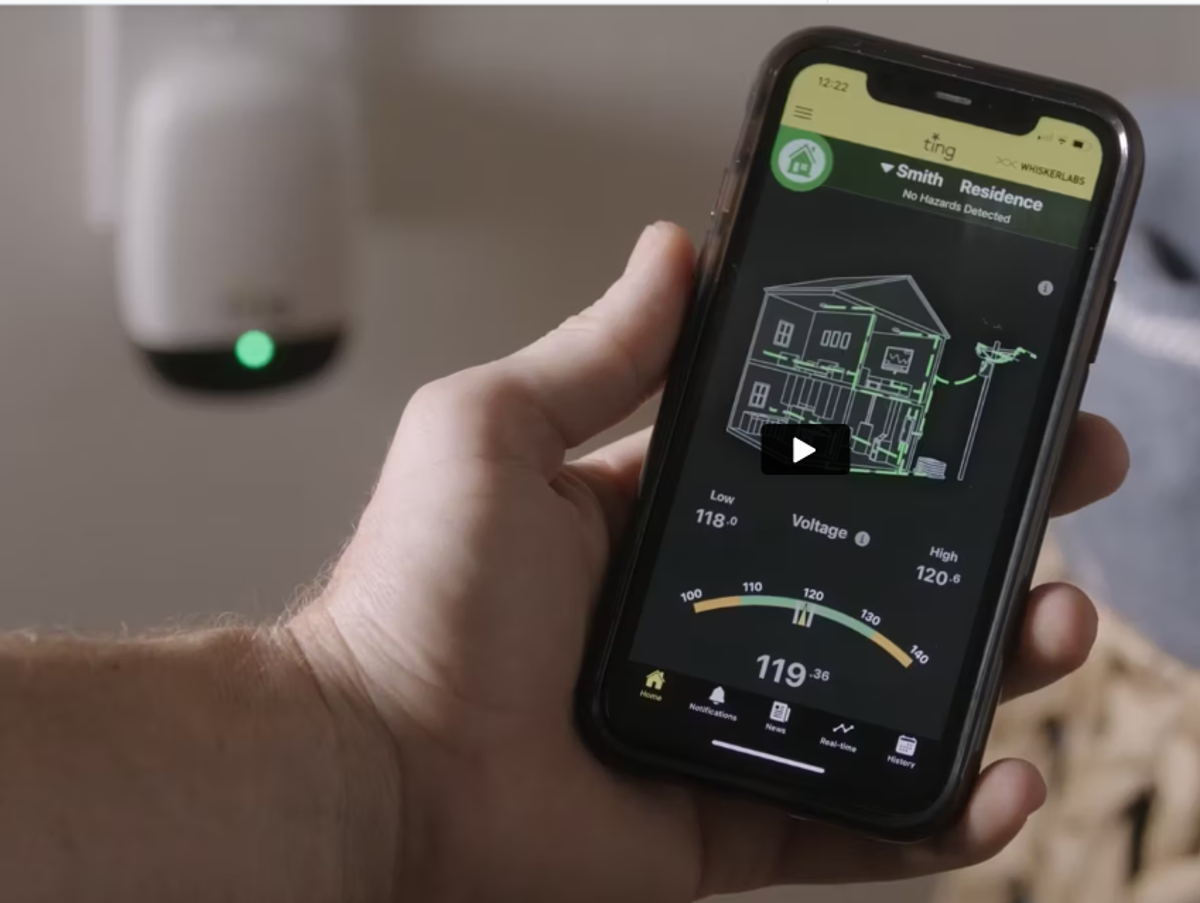
Sign up for daily news updates from CleanTechnica on email. Or follow us on Google News!
Here’s an interesting news tidbit. According to Bloomberg, the enormous demand for electricity by data centers is leading to a phenomenon known as bad harmonics. Electricity travels across high-voltage lines in waves of alternating current and when those wave patterns deviate from what’s considered ideal, it distorts the power that flows into homes. Bad harmonics can force home electronics to run hot or damage the motors in refrigerators and air conditioners, resulting in billions of dollars of damage. More importantly, bad harmonics are symptomatic of much deeper problems that are engulfing the US grid, Bloomberg says.
Bad harmonics occur when the electrical current supplied strays from moving in a perfect wave pattern at a rate of 60 cycles per second. The acceptable limit for deviations from that pattern for local lines is based on industry engineering standards. Sustained distortions that deviate from the ideal pattern by 8 percent or more can reduce efficiency and degrade equipment faster.
“Harmonics are a pretty good canary in the coal mine for early signs of stress and problems,” said Bob Marshall, chief executive officer of Whisker Labs, which tracks power quality in real time using roughly 1 million Ting residential sensors. Those sensors are intended to alert homeowners to dangerous wiring issues that could lead to house fires. Whisker says those issues result in a fire every ten minutes in the US. Ting delivers intelligent detection and mitigation of electrical hazards both in the home and on the power grid before a fire can start, the company says.

Whisker Labs draws on decades of electromagnetic and atmospheric sensor expertise combined with AI to offer the only IoT solution that detects electrical faults in the home and on the grid. Its network of sensors is spread so widely across the country that nearly 90 percent of US homes are within half a mile of one. A Bloomberg analysis of exclusive sensor data coupled with data from DC Byte, a market intelligence firm, showed a strong link between proximity to data centers and worsening harmonics.
More than half of the tracked households showing the worst distortions of power quality are located within 20 miles of significant data center activity, according to the analysis, which covered readings from February through October, 2024. US census figures show that about 3.7 million Americans live in the areas most affected.
With more data facilities in the works to support AI, there is an urgency to get a better understanding of what their impact will be, said Aman Joshi, chief commercial officer of Bloom Energy, a fuel cell developer that has been researching how to stabilize the grid to enable data center growth. AI’s energy consumption is volatile and more akin to a sawtooth graph than the smooth line most data center operators had been used to until now. “No grid is designed to be able to handle that kind of load fluctuation not only for one data center but for multiple data centers at the same time,” Joshi said. Earlier this year, Bloom Energy published a white paper about how operations at these facilities can create power frequency and voltage fluctuations that inevitably affect other consumers.
Data Centers And Bad Harmonics
In hot spots like Chicago and Dallas, harmonic readings are consistently showing signs of concern. More than a third of the Whisker Labs sensors in the Chicago area showed sustained high average readings over nine months. The harmonics data in Bloomberg’s analysis was measured through Whisker Labs Ting devices, which track total harmonic distortion inside individual homes and show on a granular level how electricity is being delivered to residences. That data goes deeper than what utilities are typically required to collect and report to regulators, which can explain why there is sometimes a discrepancy between Whisker’s data and what utility companies are observing — because they aren’t seeing the home level distortions.
The Chicago area is served by Commonwealth Edison, which is owned by Exelon. “ComEd strongly questions the accuracy and underlying assumptions of Whisker Lab’s claims,” utility spokesman John Schoen said in an email to Bloomberg, “Ting devices are installed in the home and do not directly measure harmonics on the grid,” he said, adding that the utility meets power delivery standards set by the Illinois regulator and that the company’s data, which is taken from system equipment, disputes the Whisker Labs data. ComEd declined to share that data with Bloomberg News.
Nationally, the data analysis by Whisker Labs shows that roughly 1.7% of sensors in the average county had at least one monthly reading that exceeded the 8 percent threshold for bad harmonics. That figure was four times higher in Loudoun County, Virginia, an area with a large number of data centers. Neighboring Prince William County added 240 megawatts worth of data centers this year, for a total capacity of more than 1,000 megawatts. About 6% of the 1,100 sensors plugged into homes there had power distortions that exceeded 8 percent threshold, nearly all within 7 miles of significant data center activity. Two dozen of those sensors had double-digit readings, with some of them reaching as high as 12.9 percent. Meanwhile, a few hundred miles away in York County near Williamsburg, where the nearest major data center activity is more than 80 miles away, Whisker Labs data shows steady harmonics that average less than a 3 percent deviation on average.
Data Center Alley
Much of “data center alley” in Virginia is served by Dominion Energy, which says it has not observed the distortion levels reported by Whisker Labs. Spokesperson Aaron Ruby said his company’s measurements consistently show it is within industry standards based on 200 monitoring devices it has throughout the system. “In a few rare instances, we have observed very brief periods of higher than normal harmonic disruption due to abnormal configurations or equipment issues when a new installation first comes online,” he said, but immediate action was taken to resolve those issues. Most new data centers in Virginia require their own substation and transformer before they are connected to the electrical grid. This isolates them from nearby distribution circuits and limits their impact on other customers, Ruby said.
While distortions on the level of individual homes can be related to issues within that residence, Bloomberg’s analysis showed that worse harmonics were typically observed across multiple sensors in the same area, which Whisker Labs has said is more likely to indicate grid problems rather than issues inside a particular home. Harmonics, along with power quality issues generally, “is another element in these perfect storm scenarios we are not monitoring and addressing quickly and efficiently enough,” Thomas Coleman, CEO of consultant Structure Energy Solutions and a longtime expert on grid reliability, told Bloomberg.
Is this more than a “he said, she said” situation? Those of us who are not power industry experts have no way of knowing, but the reports of harmonic distortion in the vicinity of large data center installations should be a concern for everyone. The frantic quest to build more and larger data centers — my colleague Tina Casey reports there is even talk of building them in space — to serve the needs of the artificial intelligence craze will undoubtedly make this problem worse. Utility companies say those data centers are served by their own substations and transformers to prevent what happens inside from affecting other customers, but the data from Whisker Labs is troubling.
Coincidence is not causality, but observed phenomena need to be examined to determine their cause, not dismissed out of hand because they are inconvenient. We need to understand what is happening to create these bad harmonics situations as the data center craze threatens to consume more and more of the available supply of electricity. For CleanTechnica readers who would like to delve more deeply into the data center issue, this long and extremely detailed analysis by Michael Liebreich for BloombergNEF is a must read for anyone who wants to be fully informed about the AI phenomenon. It’s a great way to start your new year with a better understanding of the forces swirling around us today.

Chip in a few dollars a month to help support independent cleantech coverage that helps to accelerate the cleantech revolution!
Have a tip for CleanTechnica? Want to advertise? Want to suggest a guest for our CleanTech Talk podcast? Contact us here.
Sign up for our daily newsletter for 15 new cleantech stories a day. Or sign up for our weekly one if daily is too frequent.
CleanTechnica uses affiliate links. See our policy here.
CleanTechnica’s Comment Policy




